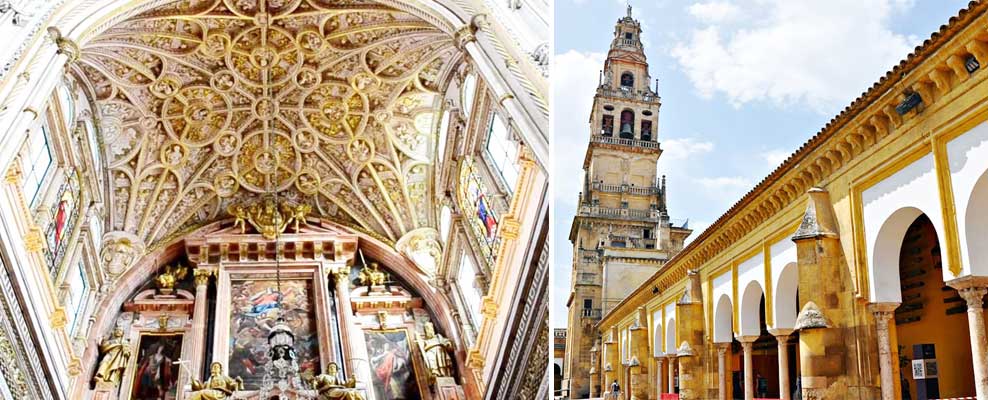As I begin rambling about my Spanish sojourn let me begin at the end – the end was probably the best and sweetest and like a true-blooded Bengali, I savor my desserts. During our 15-day trip across the Andalusia region of Spain – the last destination we made a stop was the mosque-cathedral of Cordoba.
To speak the truth, despite being an ardent history lover, thanks to the rigorous tour we did, I was near saturated with an overdose of history. Therefore, the prospect of visiting another cathedral was probably not too exciting and I was almost sure that nothing could surpass the majestic grandeur of Alhambra Palace or the historical quotient of the cathedral of Seville where the great man of the ocean Christopher Columbus lies to rest. The mosque – cathedral of Cordoba, however, surpassed my expectation as it stunned me with its architectural grandeur that told stories of a past which symbolized the many religious changes Cordoba has undergone over the centuries.
Entry to the fabulous Mosque-Cathedral Mosque − The Historical Perspective
A quick track back to the history – Cordoba is an ancient city which dated back to the Roman cites and as per historians the cathedral is built at a site which had initially housed the temple of the Roman God Janus. In 572 this temple was converted to a church when Visigoths invaded Cordoba. When in 711 the Muslims conquered Spain – they divided the church in Muslim and Christian hubs. Later however, the Christian half was bought over by Emir ‘Abd al-Rahman I who demolished the original structure and built the grand mosque on its site. In the 9th and 10th centuries further work was carried out and the mosque became one of the largest structures in the Islamic world. In the year 1236 however, during the Reconquista, the mosque was converted to a Roman Catholic church and later in the 16th century there was an insertion of a Renaissance cathedral. Today the impressive mosque-cathedral in all its architectural glory weaves in this rich historical journey that it has.

Although overall the mosque-cathedral is an impressive structure, what impressed me the most, apart from its rich background are the following:
The giant arches over around 800 columns that are made of jasper, onyx, marble, and granite. These are not all similar but taken from different sites and assembled together. There are alternating red and white arches and they are believed to be inspired by Dome of the Rock.
The prayer hall with its famous horseshoe arched mihrab or prayer niche which was created by small pieces of glass with gold and other colors so as to create a dazzling combination of colors; thus creating intricate calligraphic bands which adorn the arch.
The Dazzling Dome above the Mihrab is octagonal and the elaborate in its art work. It is with inter-laced multi-lobed arches and surrounded by Byzantine-style mosaic with Arabic inscriptions.
The intricate wood work in the cathedral, especially in the choir stall area is done in rich mahogany from the West Indies and depicts not only scenes from the Bible but also other decorative pieces of flora and fauna.

Minaret at Church of Cordoba − The Torre Del Alminar, built on the site of original minaret, offers one a great view of the city of Cordoba. And finally, the marks left by each stone mason on certain pillars – probably staking their claim on their creation which they knew would be immortal.
Man is mortal – the worldly war of lust, wealth and control is waged and forgotten as he moves on – what remains is his creation which often, like the cathedral mosque of Cordoba, is immortal. Kings have come and gone and we have forgotten their stories and even names, workmen have worked and for most we do not even know the name – what remains however is this fantastic, gigantic architectural structure which tells us stories told and untold from the past.
As Iqbal so beautifully sums up in his poem The Mosque of Cordoba:
Frail and evanescent, all miracles of ingenuity,
Transient, all temporal attainments;
Ephemeral, all worldly accomplishments.
Annihilation is the end of all beginnings,
Annihilation is the end of all ends.
Extinction, the fate of everything; Hidden or manifest, old or new.
Yet in this very scenario Indelible is the stamp of permanence,
On the deeds of the good and godly.
Photo credits: Banner Left – Wikipedia; Banner Center – Artur Bogacki; Banner Right – Capt. Surojit D. Biswas
